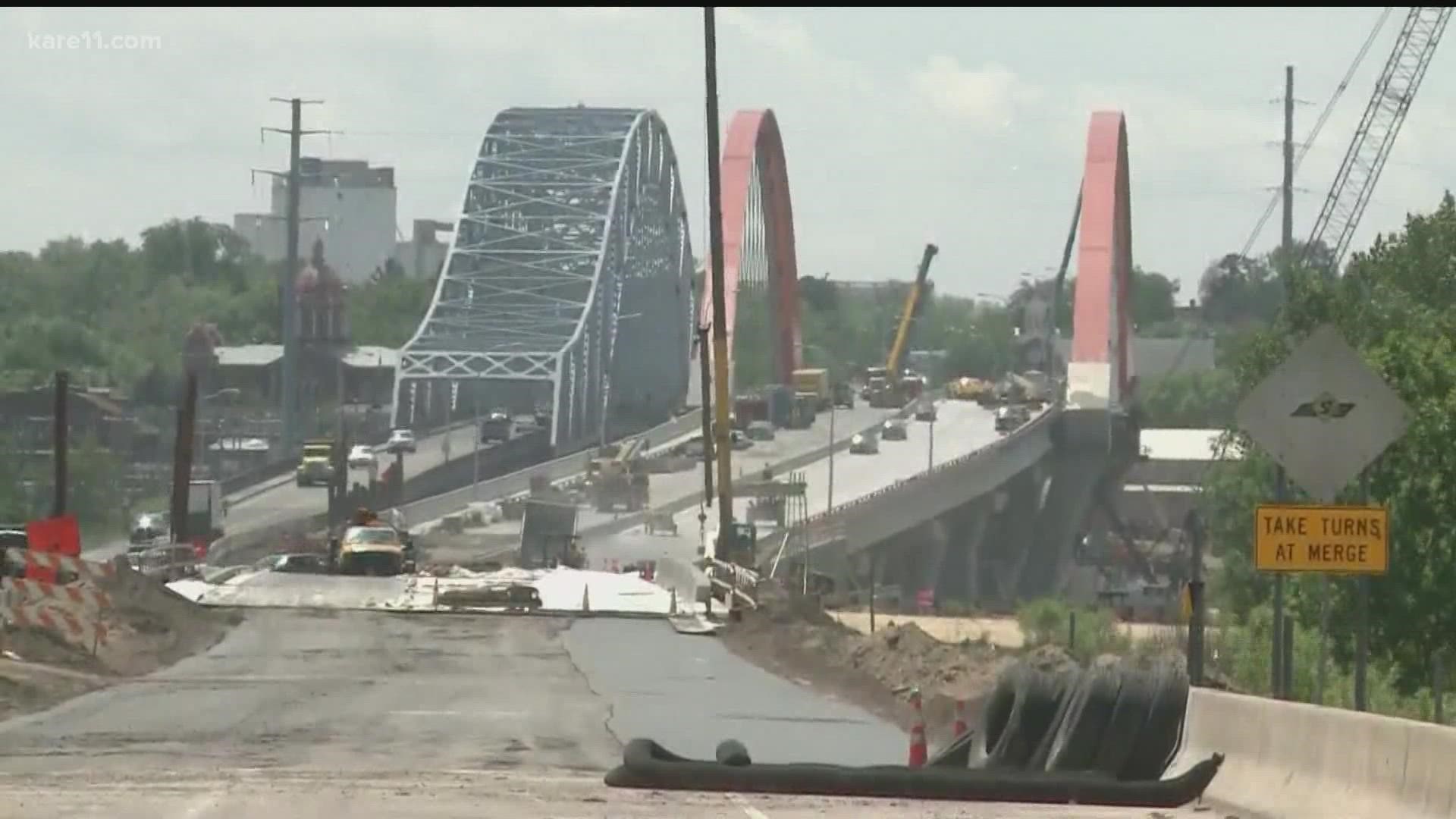MINNEAPOLIS — The collapse of the bridge over Fern Hollow Creek in Pittsburgh Friday didn't results in any deaths, which seems miraculous considering the viral video clips of twisted steel and cars in a fallen into a deep ravine.
Those images brought back searing memories of the I-35W Mississippi River Bridge collapse in August of 2007, a tragedy that killed 13 and injured 145 others. hat disaster served as a sudden, loud wake-up call for Minnesotans and their political leaders, which sparked a massive effort take a hard look at the state's 14,000 state and local highway bridges.
"Our hearts go out to the people of Pittsburgh and Pennsylvania because we know how tragic these events can be with a bridge collapse," Minnesota Transportation Commissioner Margaret Anderson Kelliher told KARE.
"Back in 2008, our focus at MNDOT and by local partners as well became a very critical look at our bridge conditions. And a lot of work has been done since 2008."
Commissioner Kelliher, as Minnesota House Speaker in 2008, led legislators to raise new revenue dedicated for roads and bridges. That year they passed Chapter 152 into Minnesota state law, which required MNDOT to find the bridges most in danger of failing and put them on an accelerated schedule for repairs and replacement.
MNDOT came up with a list of 172 bridges based on factors such as bridge condition, age, load capacity, type of bridge, susceptibility to flood damage, fracture-critical design features, and traffic volume.
In the years since 2008, 112 of those bridges have been replaced with new spans and 24 have been renovated. The others are in the pipeline to be replaced as funding becomes available.
The 52-year-old bridge that collapsed in Pittsburgh Friday had an overall "poor" rating since 2011. That rating doesn't necessarily mean collapse is imminent, but it typically moves bridges up on the priority list for replacement or restoration.
Currently in Minnesota, 75 state highway bridges, or 2% of the 3,756 state bridges carry a poor rating. There are 544 local highway bridges in the poor category, which is 5.6% of the state's 10,307 local bridges.
Minnesota compares favorably to surrounding states in the category of structurally deficient bridges, with only 4% listed that way. Wisconsin's at 7%, North Dakota at 10%, South Dakota at 17% and Iowa at 19%.
"We have work to do, but we feel when folks are driving now, they can feel confident that things are in good condition in Minnesota, and that we’re going to keep working to keep it that way," Kelliher remarked.
State and local agencies also dramatically stepped up bridge inspections since the 35W collapse, adding more technology including "snooper" rigs and even drones in some cases to get a better look at potential trouble spots.
All state bridges are routinely inspected at least once every two years. Those in the poor category are checked yearly.
Nariman Vanaki, Hennepin County Transportation Project Delivery Manager, said inspectors look at a multiple of factors and take detailed notes so they can track change in structural conditions over time.
"They're looking at the decks, the beams, the bearings, which is what the beams sit on, onto the bridge abutment," Vanaki told KARE.
"They’re looking at concrete deterioration, looking at steel, at rusting or the section loss. They keep monitoring that as the bridge ages so that we have a good understanding of how the bridge is aging and deteriorating."
Vanaki said the term "structurally deficient" doesn't necessarily mean a bridge is dangerous or on the verge of failing. It's a term used as a guideline to focus extra resources.
"It doesn't mean a bridge is necessarily unsafe. It a term that triggers how the bridge is viewed, how it gets funded, what potential funding you might have for that bridge."
One word of warning on the horizon is something known as the "bridge bubble" --a substantial number of the state’s bridge are nearly 50 years old and will required more attention and taxpayer dollars in the not-too-distant future.
That's one of the reasons Commissioner Kelliher and others welcomed news of the Infrastructure Investment and Jobs Act signed into law last November by President Biden will send $4.5 billion to Minnesota state highways plus $302 million set aside for bridge replacement and repair projects.

